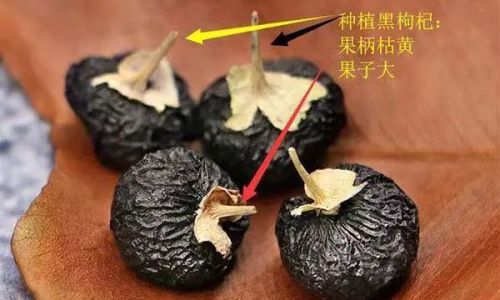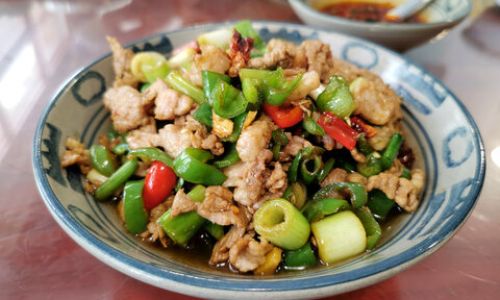Table of content
Introduction
In the realm of natural remedies and superfoods, wild black goji berries (Lycium ruthenicum) have emerged as a star ingredient due to their rich nutritional profile and myriad health benefits. Renowned for their high antioxidant content, vitamins, minerals, and unique polysaccharides, these berries have garnered immense popularity among health-conscious individuals. However, with increasing demand, the market has been flooded with both genuine and counterfeit products, making it challenging for consumers to discern the authenticity of wild black goji berries. This comprehensive guide aims to equip you with the necessary knowledge and tools to identify genuine wild black goji berries from their impostors.
Understanding Wild Black Goji Berries
Before diving into the intricacies of identifying genuine wild black goji berries, it is crucial to understand what they are. Wild black goji berries are native to the Qinghai-Tibet Plateau and other high-altitude regions of China, Mongolia, and Tibet. Unlike their red counterparts (Lycium barbarum), which are more commonly cultivated, wild black goji berries grow in harsh, unforgiving environments, giving them a unique nutritional profile and darker hue.
These berries are small, typically around 5-8 mm in diameter, with a deep, almost inky black color. Their skin is slightly wrinkled and tough, while the inside is fleshy and contains numerous tiny seeds. The taste is subtly sweet with a hint of tartness, making them a delightful addition to various dishes and beverages.

Nutritional Benefits and Uses
Wild black goji berries are praised for their extensive health benefits, which include:
-
Antioxidant Power: Rich in antioxidants like anthocyanins, zeaxanthin, and lutein, they help combat oxidative stress and reduce inflammation.
-
Eye Health: The presence of zeaxanthin and lutein supports eye health, potentially reducing the risk of age-related macular degeneration.
-
Immune Boosting: Polysaccharides in wild black goji berries enhance immune function, making them beneficial during cold and flu seasons.
-
Energy and Stamina: They contain natural sugars, amino acids, and vitamins that provide sustained energy without the crash associated with caffeine.
-
Skin Health: Antioxidants promote skin elasticity and reduce signs of aging, making them a favorite among skincare enthusiasts.
-
Liver Protection: Studies suggest that compounds in wild black goji berries may help protect the liver from damage.
Given these benefits, it is understandable why consumers are eager to incorporate wild black goji berries into their daily routines. However, the challenge lies in ensuring that the product they purchase is genuine.
Common Imposters and Their Origins
The market for wild black goji berries is rife with imposters, primarily due to the berries’ rarity and high demand. Here are some common types of imposters and their origins:
-
Cultivated Red Goji Berries Dyed Black: These are the most common imposters. Cultivated red goji berries are cheaper and more abundant than wild black ones. To mimic the appearance of wild black goji berries, sellers often dye them black using food coloring or other chemicals.

-
Other Berry Species: Berries like black currants, elderberries, or even dried grapes can be passed off as wild black goji berries. These berries may share some nutritional benefits but lack the unique profile of wild black goji berries.
-
Wild Berries from Different Species: Sometimes, berries from unrelated species that resemble wild black goji berries are sold as the real thing. These berries may have similar appearances but vastly different nutritional values.
-
Old or Poor-Quality Berries: Sellers may attempt to pass off old, stale, or moldy berries as fresh wild black goji berries by coating them with preservatives or dyes.
Identifying Genuine Wild Black Goji Berries
To ensure you are purchasing genuine wild black goji berries, follow these comprehensive steps:
Visual Inspection
-
Color: Genuine wild black goji berries have a deep, inky black color with slight variations in hue due to natural variations in ripeness and exposure to sunlight. If the berries are uniformly black with no variations, they may have been dyed.
-
Shape and Size: Wild black goji berries are small, typically around 5-8 mm in diameter, with a slightly wrinkled appearance. They should not be perfectly round or overly large.
-
Seeds: Genuine berries contain numerous tiny seeds inside. If the berries appear seedless or have very few seeds, they are likely imposters.
Texture and Feel
-
Touch: Wild black goji berries have a slightly tough skin that gives way to a fleshy interior. They should not feel overly soft or mushy.
-
Moisture Content: Genuine berries should have a moderate moisture content, neither too dry nor too wet. Overly dry berries may indicate they are old or have been improperly stored, while overly wet berries could be moldy or have been treated with preservatives.
Taste and Aroma
-
Taste: Genuine wild black goji berries have a subtly sweet taste with a hint of tartness. They should not be overly sweet or have an artificial flavor.

-
Aroma: Wild black goji berries have a faint, earthy aroma. If the berries smell strongly artificial or have no aroma at all, they may be imposters.
Origin and Supplier Verification
-
Certification and Labeling: Look for products that are certified organic and have clear labeling indicating their origin. Genuine wild black goji berries should come from high-altitude regions like the Qinghai-Tibet Plateau.
-
Supplier Reputation: Research the supplier or brand before purchasing. Look for reviews, testimonials, and certifications to ensure they are reputable.
-
Price: While price should not be the sole determinant, genuine wild black goji berries tend to be more expensive due to their rarity and harvesting difficulties. If the price is unusually low, it may be a sign of imposters.
Testing for Authenticity
-
Water Test: Soak a few berries in water for a few hours. Genuine wild black goji berries should release a faint purple-black color into the water due to their natural anthocyanins. If the water turns a bright, unnatural black or remains clear, the berries may be dyed.
-
Chemical Testing: For more definitive results, consider sending a sample to a lab for chemical analysis. This can identify the presence of dyes, preservatives, or other adulterants.
Conclusion
Incorporating wild black goji berries into your diet can offer numerous health benefits, but only if you ensure you are consuming genuine products. By following the steps outlined in this guide—visual inspection, texture and feel analysis, taste and aroma evaluation, origin and supplier verification, and authenticity testing—you can confidently discern genuine wild black goji berries from their imposters. Remember, the key to maximizing the health benefits of these berries lies in their authenticity and quality. So, take the necessary precautions, and enjoy the myriad benefits of genuine wild black goji berries!





0 comments